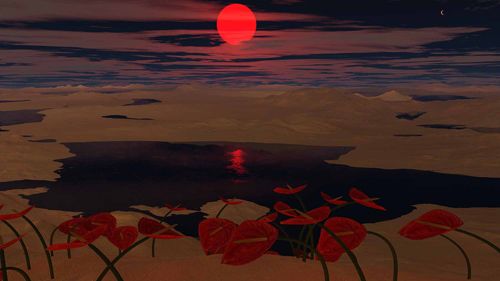
For certain ancient planets orbiting smaller, older stars, the gravitational influence of an outer companion planet might generate enough energy through tidal heating to keep the closer-in world habitable even when its own internal fires burn out. But what would such a planet look like on its surface? Here, UW astronomer Rory Barnes provides a speculative illustration of a planet in the habitable zone of a star about the size of the sun. “The star would appear about 10 times larger in the sky than our sun, and the crescent is not a moon but a nearby Saturn-sized planet that maintains the tidal heating,” Barnes notes. “The sky is mostly dark because cool stars don’t emit much blue light, so the atmosphere doesn’t scatter it.”Image credit: Rory Barnes, University of Washington
